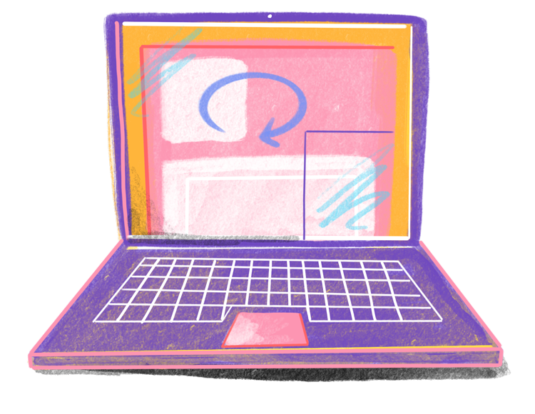This mixed methods study evaluated student and provider attitudes and expectations about offering students online access to their student health services visit notes (open notes). Six (N=6) health care providers from four public universities in northeastern Massachusetts participated. Qualitative interviews were completed by students (N=14) from one University in fall of 2013 and an online survey was completed at two universities in Spring of 2014. Attitudes and expectations were explored using qualitative data and descriptive statistics were used to analyze survey questions. Students’ interviews revealed that they desire control over their health and open notes would give them insight and involvement in their health care. Survey data supported these themes. In contrast, providers worried about how it could impact provider-patient relationships. Open notes has the potential to promote students’ understanding and responsibility for their healthcare, which could assist students in their transition from pediatric to adult health care.
Patient Experience
Sharing visit notes: Getting patients and physicians on the same page
Shared notes enhance communication and engagement among patients, clinicians, and family members and can be an important facilitator of shared decision making. Patients report valuable clinical benefits, including improved adherence to their medications and treatment plans. Patients want transparency, and those who have experienced shared notes believe the practice should continue. Most providers who share notes want to continue the practice as well and do not report an increase in time spent writing notes.
Your Patient Is Now Reading Your Note: Opportunities, Problems, and Prospects
Patients have unprecedented online access to their medical records. More than 6 million Americans can now read their doctors’ notes via patient portals, and continued rapid growth is likely. Sharing notes with patients may yield important health benefits, including increased patient empowerment and improved medication adherence. Seeing written information, including notes, helps patients remember the plan of care, reinforces patients’ positive behaviors, and strengthens the patient–doctor alliance.
Patient portals and personal health information online: Perception, access, and use by US adults
Background: Access to online patient portals is key to improving care, but we have limited understanding of patient perceptions of online portals and the characteristics of people who use them.
Methods: Using a national survey of 3677 respondents, we describe perceptions and utilization of online personal health information (PHI) portals.
Family Perspectives on Whiteboard Use and Recommendations for Improved Practices
Of all families, approximately one-half were not informed about whiteboards and one-third did not use them. Reasons for nonuse were largely modifiable. Parents made aware of their whiteboard by their care teams demonstrated increased likelihood of active whiteboard use, highlighting the importance of education and suggesting a gap in harnessing the full potential of whiteboards as communication tools. Families’ recommendations can help inform whiteboard practices to strengthen communication and care.
When doctors share visit notes with patients: a study of patient and doctor perceptions of documentation errors, safety opportunities and the patient–doctor relationship
Patient advocates and safety experts encourage adoption of transparent health records, but sceptics worry that shared notes may offend patients, erode trust or promote defensive medicine. As electronic health records disseminate, such disparate views fuel policy debates about risks and benefits of sharing visit notes with patients through portals.
Patients learning to read their doctors’ notes: the importance of reminders
As millions of patients nationwide increasingly gain access to clinicians’ notes, explicit email invitations to review notes may be important for fostering patient engagement and patient-doctor communication.
Engaging patients through open notes: an evaluation using mixed methods
As the use of fully transparent medical records spreads, it is important to gain a deeper understanding of possible benefits or harms, and to characterise target populations that may require varying modes of delivery. Patient desires for expansion of this practice extend to specialty care and settings beyond the physician’s office. Patients are also interested in becoming involved actively in the generation of their medical records. The OpenNotes movement may increase patient activation and engagement in important ways.
This is an Open Access article distributed in accordance with the Creative Commons Attribution Non Commercial (CC BY-NC 4.0) license, which permits others to distribute, remix, adapt, build upon this work non-commercially, and license their derivative works on different terms, provided the original work is properly cited and the use is non-commercial.
Characteristics of Patients Who Report Confusion After Reading Their Primary Care Clinic Notes Online
Patient access to online electronic medical records (EMRs) is increasing and may offer benefits to patients. However, the inherent complexity of medicine may cause confusion. We elucidate characteristics and health behaviors of patients who report confusion after reading their doctors’ notes online. We analyzed data from 4,528 patients in Boston, MA, central Pennsylvania, and Seattle, WA, who were granted online access to their primary care doctors’ clinic notes and who viewed at least one note during the 1-year intervention. Three percent of patients reported confusion after reading their visit notes.
Patient Access to Online Visit Notes: Perceptions of Doctors and Patients at an Urban HIV/AIDS Clinic
Patients living with HIV/AIDS face large societal and medical challenges. Inviting patients to read their doctors’ visit notes via secure electronic portals may empower patients and improve health. We investigated whether utilization and perceptions about access to doctors’ notes differed among doctors and patients in an HIV/AIDS clinic versus primary care setting. We analyzed pre- and 1-year postintervention data from 99 doctors and 3819 patients. HIV clinic patients did not report differences in perceived risks and benefits compared to primary care clinic patients, however, they were more likely to share notes with friends (33% versus 9%, P = .002), other health professionals (24% versus 8%, P = .03), or another doctor (38% versus 9%, P < .0001). HIV clinic doctors were less likely than primary care doctors to change the level of candor in visit notes (P < .04). Our findings suggest that HIV clinic patients and doctors are ready to share visit notes online.



